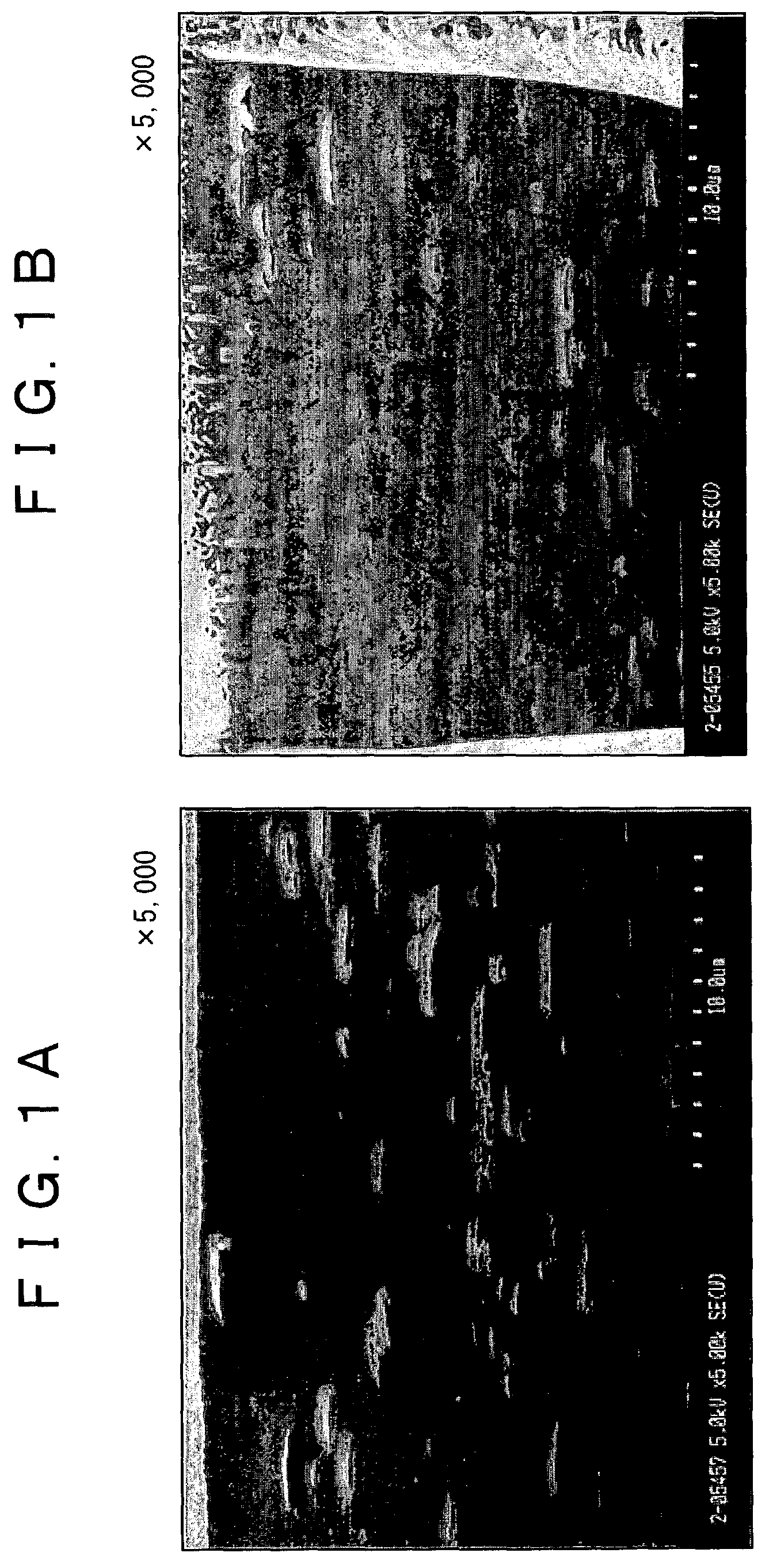Balloon catheter
a balloon catheter and balloon technology, applied in the direction of catheters, pedestrian/occupant safety arrangements, vehicular safety arrangements, etc., can solve the problems of insufficient impregnation, defects not impregnated with resin, prone to occur, etc., to reduce the occurrence of pin holes and cracks, improve the strength of the balloon, and enhance the withstand pressure
- Summary
- Abstract
- Description
- Claims
- Application Information
AI Technical Summary
Benefits of technology
Problems solved by technology
Method used
Image
Examples
example 1
[0122]Using a biaxial kneader, carbon short-fibers (diameter: 7 μm, average length: 6 mm, aspect ratio: about 850) previously surface-treated by a titanium coupling agent and a polyamide elastomer resin (commercially available from EMS Japan Co., Ltd. in the trade name of Grilamid) are extruded and hot-cut at 220° C., to prepare kneaded pellets. The content of the carbon short-fibers is set to 18 wt % on the basis of the total amount of the polyamide elastomer. The lengths of the short-fibers become short by kneading (compounding), with a result that the average length of the carbon short-fibers in the matrix resin is in a range of 400 to 500 μm and the aspect ratio of each of the carbon short-fibers is in a range of 60 or more.
[0123]Outer and inner layers each of which is made from a polyamide elastomer resin and an intermediate layer made from the above-described fiber-blended polyamide elastomer resin are extruded into a tubular parison by the rotary extrusion molding machine (ha...
example 2
[0128]Nanocarbon tubes of a multi-layer type (outer diameter: 7 nm, length: about 80 nm) are blended in an amount of 15 wt % to a thermoplastic polyimide (commercially available from Mitsui Toatsu Chemicals, Inc. in the trade name of AURUM). To be more specific, the nanocarbon tubes are added in polyamic acid as a precursor of the polyimide in a solution polymerization step of the a precursor, and after formation of polyimide rings, a resin containing the nanocarbon tubes blended in the polymerization step is taken out.
[0129]The nanocarbon tube blended thermoplastic polyimide resin is molded into a tubular parison (wall thickness: 0.025 mm) by a known extrusion molding method. In addition, the drawdown ratio in cross-section between the die and tip upon extrusion molding is set to 8:1.
[0130]The parison is molded into a balloon (outer diameter: 3.0 mm) by a known biaxial orientation blow molding process using a balloon molding die, and the balloon is assembled into a PTCA balloon cat...
example 3
[0133]A polyurethane resin (commercially available from Dainippon Ink and Chemicals, incorporated in the trade name of “Pandex”) is dissolved in tetrahydrofuran at a concentration of 20%, and carbon short-fibers (diameter: 7 μm, average length: 6 mm, aspect ratio: about 850) are added in the polyurethane solution. The resultant polyurethane solution containing the carbon short-fibers is slowly stirred at 30° C. and is simultaneously irradiated with ultrasonic waves at a frequency of 38 KHz and a power of 600 W for 60 min by an ultrasonic transducer (commercially available from Ultrasonic Engineering Co., Ltd. in the trade name of “Model CM-121”).
[0134]A metal wire having an outer diameter of 1 mm covered with polytetrafluoroethylene (PTFE) is dipped in the short-fiber blended polyurethane solution having been subjected to the ultrasonic vibration treatment, and is then slowly pulled up and dried for 2 hr at 60° C. Such a step is repeated by several times, and finally the metal wire ...
PUM
| Property | Measurement | Unit |
|---|---|---|
| Fraction | aaaaa | aaaaa |
| Fraction | aaaaa | aaaaa |
| Luminous flux | aaaaa | aaaaa |
Abstract
Description
Claims
Application Information
 Login to View More
Login to View More - R&D
- Intellectual Property
- Life Sciences
- Materials
- Tech Scout
- Unparalleled Data Quality
- Higher Quality Content
- 60% Fewer Hallucinations
Browse by: Latest US Patents, China's latest patents, Technical Efficacy Thesaurus, Application Domain, Technology Topic, Popular Technical Reports.
© 2025 PatSnap. All rights reserved.Legal|Privacy policy|Modern Slavery Act Transparency Statement|Sitemap|About US| Contact US: help@patsnap.com



